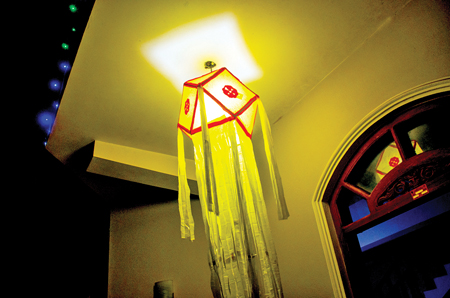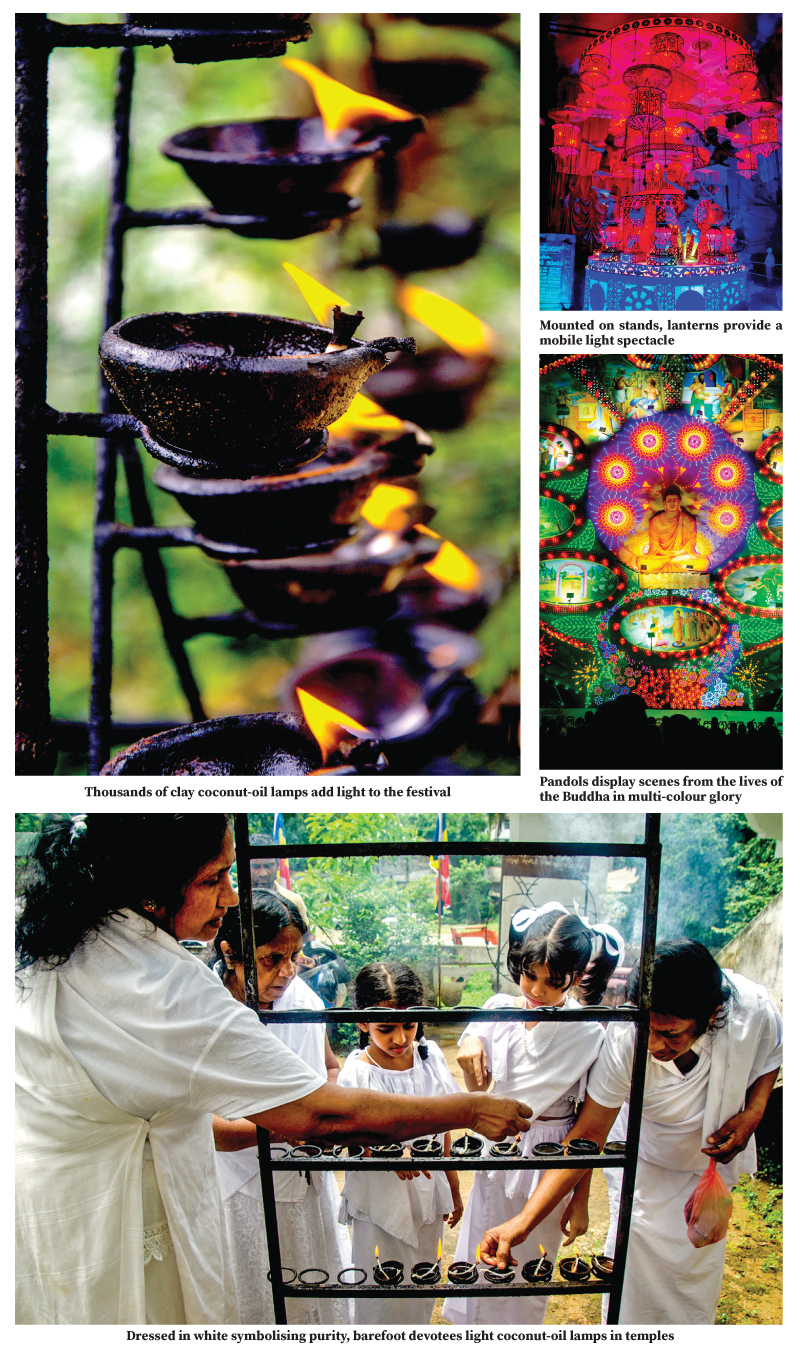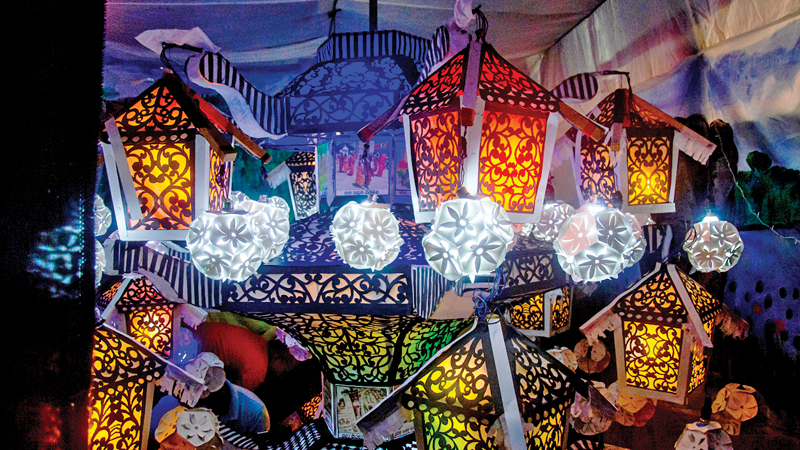On the night of the Vesak full moon Poya day in May, the island lights up to observe the most celebrated festival of the Buddhist calendar.
 As soon as the festivities for the Sinhala and Tamil New Year fade, preparations begin for the festival of Vesak, the most important event in the Buddhist calendar.
As soon as the festivities for the Sinhala and Tamil New Year fade, preparations begin for the festival of Vesak, the most important event in the Buddhist calendar.
This ancient celebration commemorates in a single magnificent spectacle the Birth, Enlightenment and the Passing Away of the Buddha himself. (In Pali, the language of the Buddhist scriptures, the month of May is known as Visakha which becomes Vesak in Sinhala).
Yet, this thrice-blessed day has yet another important historical significance for Sri Lanka – ‘the island the doctrine’. For tradition has it that Prince Vijaya, the half-legendary founder of the Sinhala people, arrived in the island on the very day that the Buddha passed away.
To honour the ‘Enlightened One’, homes, Buddhist temples and streets are lit up by lanterns, electric lights and thousands of flickering clay coconut-oil lamps. Coloured papers, coconut leaves, garlands, flags and pictures are added to the brilliant decorations, symbolising the light of the Buddha’s teaching, dispelling the darkness of ignorance from the world. Vesak has been described by one poet as “an illuminated whisper of a world in homage”.
Talent and imaginations
Long before the day itself, children and adults, country and city folk, devote their talent and imaginations to the fashioning of paper lanterns. The most popular traditional shapes are the octagonal ‘atapattam’, the star and the lotus lanterns. Other motifs, taken from the world of contemporary technology, such as motorcars, rockets, aircraft and spaceships are much prized by younger devotees.

Lanterns come in all shapes and sizes, and range from the elegance to the ornate
Unique though the shapes and sizes of these lanterns are to Sri Lanka, they are outshone by another island specialty – the ‘pandol’, an enormous painted screen, displaying episodes from the lives of the Buddha framed in patterns of coloured lights. Raised in village squares and marketplaces, beside temples or alongside busy roads, the pandols tower above the heads of sightseers and worshippers.
A more recent addition to the luminance of Vesak, they can be seen as pictorial depictions with their numbered images and guidelines for the bystander. Costly (they are often funded by ‘mudalalis’ – industrialists, traders and businessmen), their depictions are enhanced by showers of winking lights and taped music. Pandols are, generally, inaugurated by prominent personalities at an auspicious time fixed by astrologers.
Both the lanterns and the pandols are now part and parcel of Vesak and appear to be indissociable from its festivities. But while the home-made lanterns and decorations (and the occasional village pandol, lovingly and respectfully designed and painted) still convey the spirit, vitality and charm of this festival of lights, some feel the huge, garish pandols, as impressive as they may be, have less in common with the devotional tone of the festival.
At its best, Vesak is a genuine folk festival, underlining the innovative and creative skills of artists and artisans. In the many forms the lanterns assume, and the skills which go into their making, folk art finds its true expression. Today, the gaudy electric lights have robbed some of the wayside pandols of their true meaning. While in the past, the success of a pandol depended on the painter’s skill, now, too often trick lighting has become a substitute for artistry.
Festival of serenity
Yet, Vesak remains a festival of serenity and peace – in the pursuit of which the Buddha sacrificed all worldly pleasures. In his honour, to seek deliverance from the Samsaric cycle and for general goodness, the people offer commitment to cultivate such virtues as compassion, kindness, generosity and gratitude. Before daybreak, throngs of devotees, clad in white as a symbol of purity, make their way to temples, meditate and to bind themselves to follow the Noble Eightfold Path – right view, right aspiration, right speech, right action, right livelihood, right effort, right mindfulness and right concentration.
Faithful pilgrims flock to ancient royal cities visited by the Buddha such as Kelaniya and, above all, to Anuradhapura where, in 247 B.C. E., a sapling of the sacred Bo tree beneath which the Buddha attained Enlightenment, was planted. The sacred tree, reputedly the world’s oldest, still stands in the Anuradhapura sacred city.
Vesak is the time for charity, when huge alms halls or ‘dansals’ provide free meals of warm rice and curry or young coconut water or iced drinks to anyone who enters. The needy, the hungry, the destitute, the disabled, and the homeless, will receive alms and clothing; and at the many wayside ‘dansals’, all will be welcome to still their hunger and quench their thirst.








